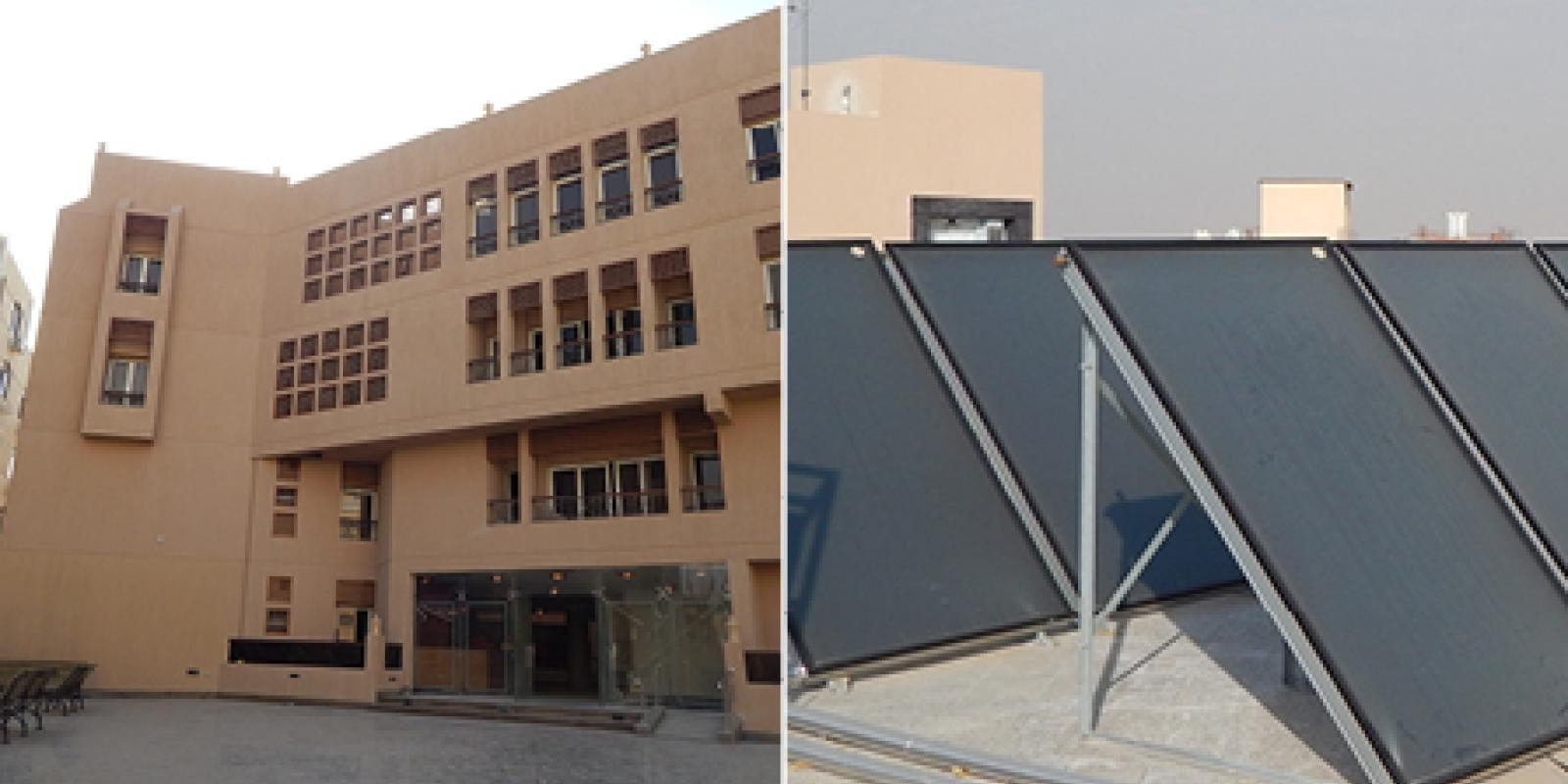
New Phase of Faculty Housing Complete, Embeds Green Concepts
As part of an ongoing commitment to increasing energy efficiency, reducing waste and making AUC a sustainable community, the University recently completed a new phase of faculty housing units in New Cairo, with one of the two newly constructed buildings embedding green concepts in its design and structure. Faculty members will begin moving into the new housing units this month, and those who choose to move into any of the two buildings before December 31, 2013 will receive a 10 percent discount off the monthly rent for six months.
“Embedding green concepts in buildings is uncommon in Egypt,” explained Sherif Maged, director of the Office of Faculty Housing, adding that the construction team is seeking official certification from the U.S. Green Building Council. “Only a handful of buildings in this country have been classified as green.”
The decision to embed green concepts in the new phase of faculty housing was not pre-planned. While working on the new phase, the construction team learned that embedding green concepts would only increase total costs by 5 to 7 percent. “A green agenda was implemented in this building based on feedback from faculty members living in the first building, as well as the administration and the Office of Sustainability’s interest in affecting policy,” explained Khaled Tarabieh, assistant professor of sustainable design in the Department of Construction and Architectural Engineering, who serves as an adviser on the project. “The goal in constructing a green building is to achieve better performance not just in terms of energy and water efficiency, but also to improve the quality of life and provide more learning opportunities for the AUC community about green living.”
One of the most anticipated features of the new housing is the green roof, which will not only provide faculty members with the opportunity to garden, but will make the building energy efficient by providing an additional layer of insulation from thermal radiation, keeping the building cooler during summer months. “My husband and I hope to grow some greens and herbs in the roof garden,” said Chelsea Green, assistant professor of music.
Echoing the same sentiment, Wendy McFeely, instructor in the Department of English Language Instruction, noted, “I am looking forward to being able to grow some vegetables and herbs on the rooftop, in addition to helping the environment by using solar energy for some of our household energy needs. Every little bit helps.”
In constructing this phase of the faculty housing, the AUC team made use of Egypt’s abundant solar resources. They installed solar water heaters to minimize the use of electricity in heating the water, as well as solar panels on the roof to drive the system. “We used low-VOC paints (non-toxic material) to provide a healthier indoor environment,” said Mohamed Sakory, housing officer in the Office of Faculty Housing and project manager for the new phase of construction. “People with asthma, in particular, would benefit from these safer paints. We also used environmentally friendly, non-CFC cooling refrigerants for the air conditioners, which we imported, as well as LED light bulbs, which consume less electricity than regular light bulbs and last up to 10 years.”
The team also installed mixers with filters “aerators” to reduce water use. The filters decrease the amount of water flowing from taps, which means that less water is being used for everyday purposes. In addition, metering systems have been installed in the buildings to gauge electricity consumption so that residents can keep track of how much energy they are using. “This system,” explained Tarabieh, “provides building operators, as well as occupants, with better information about energy consumption in order to determine patterns of usage and implement a better accounting system for energy use, so that the daily problematic areas of the system can be easily spotted for better operations and management.”
“Over the long term,” Maged noted, “these buildings will help reduce energy consumption and will turn into a cost-effective venture. People are becoming more aware of the importance of applying green concepts in everyday life. The biggest challenge we had to face was the unavailability of some of the construction material, much of which had to be imported.”
The team that worked on this building will be able to transfer the knowledge they’ve developed back to the old faculty housing building, as well as other buildings on campus, to further integrate green technologies into AUC’s built environment, Tarabieh affirmed. “This building provides whoever lives there with a greener community and healthier environment, and –– at the same time –– the University saves on energy,” he said. “It also serves as an educative model for the student body, who can visit the building and use it as a classroom to learn about applying green concepts.”
For a virtual tour of the new faculty housing,click here.
For more information,click here or email [email protected].
